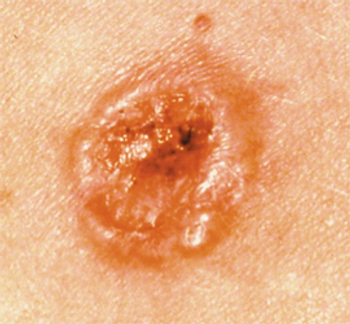
Oncology NEWS International
- Oncology NEWS International Vol 17 No 2
- Volume 17
- Issue 2
Virus linked to Merkel cell carcinoma
University of Pittsburgh Cancer Institute researchers have discovered a previously unknown virus strongly associated with Merkel cell carcinoma, a rare but aggressive skin cancer that typically affects elderly and immunosuppressed individuals
PITTSBURGHUniversity of Pittsburgh Cancer Institute researchers have discovered a previously unknown virus strongly associated with Merkel cell carcinoma, a rare but aggressive skin cancer that typically affects elderly and immunosuppressed individuals.
In Science (Feng et al: published online January 17, 2008, DOI: 10.1126/science.1152586), the researchers describe a nearly decade-long effort to identify the virus, which they call Merkel cell polyomavirus (MCV).
"This is the first polyomavirus to be strongly associated with a particular type of human tumor," said Patrick Moore, MD, MPH, leader of the molecular virology program at UPCI.
The researchers analyzed nearly 400,000 mRNA genetic sequences from four samples of Merkel cell tumor tissue using a technique refined in their lab called digital transcriptome subtraction.
Comparing the sequences expressed by the tumor genome to gene sequences mapped by the Human Genome Project, the researchers systematically subtracted known human sequences, leaving a group of genetic transcripts that might be from a foreign organism.
One sequence was similar to but distinct from all known viruses. The team went on to show that this sequence belonged to a new polyomavirus present in 8 of 10 (80%) Merkel cell tumors they tested but only 5 of 59 (8%) control tissues from various body sites and 4 of 25 (16%) control tissues from skin.
Although MCV is most commonly found in Merkel cell tumors, it also can be found in healthy people. The most important distinguishing feature is that MCV integrates into tumor cells in a monoclonal pattern, indicating that it infects the cell before it becomes cancerous. In 6 of 8 MCV-positive Merkel cell tumors, viral DNA was integrated within the tumor genome in this pattern.
Dr. Moore said that the findings, if confirmed, could ultimately lead to a blood test for the virus or a vaccine against it, similar to the HPV vaccine model to prevent cervical cancer.
Articles in this issue
almost 18 years ago
NLST article not balanced, critic of screening trial assertsalmost 18 years ago
M.D. Anderson and AstraZeneca form neuropathic pain alliancealmost 18 years ago
Good nilotinib responses in imatinib-resistant AP-CMLalmost 18 years ago
Benefit of adjuvant RT/CT for pancreatic ca affirmedalmost 18 years ago
Recurrence Score helps select node+ pts for chemoalmost 18 years ago
For resectable liver mets: Preop chemotherapy or not?almost 18 years ago
Plerixafor boosts stem cell mobilization in myeloma ptsalmost 18 years ago
MRI shows second-hand smoke damagealmost 18 years ago
Assay has high sensitivity for hard-to-detect SLN metsalmost 18 years ago
Dasatinib effective in imatinib resistant/intolerant CMLNewsletter
Stay up to date on recent advances in the multidisciplinary approach to cancer.





















































































